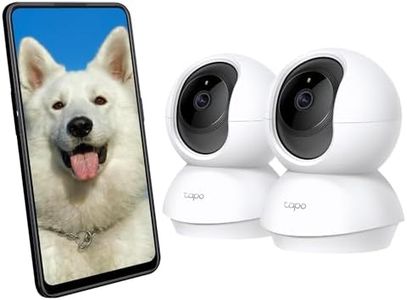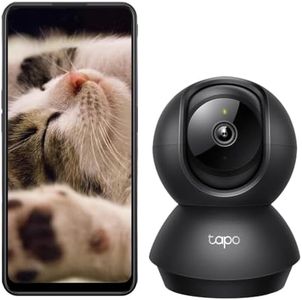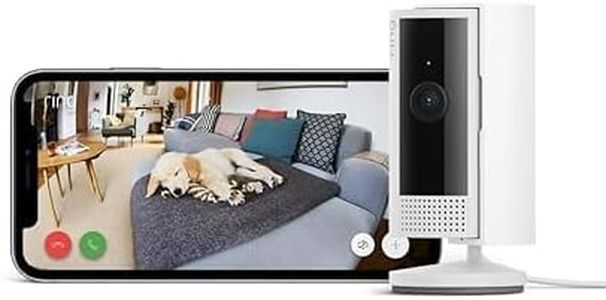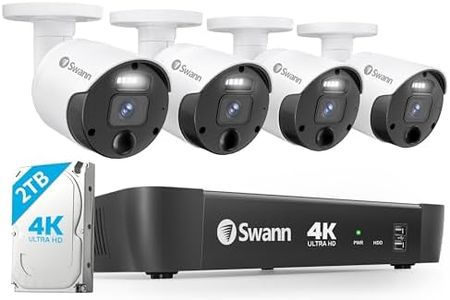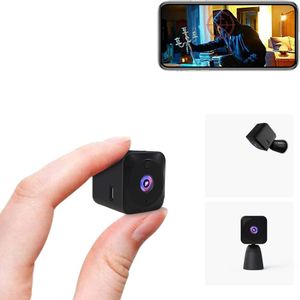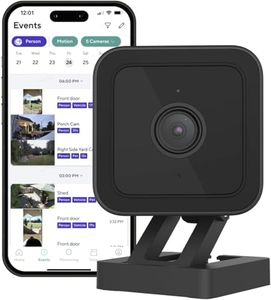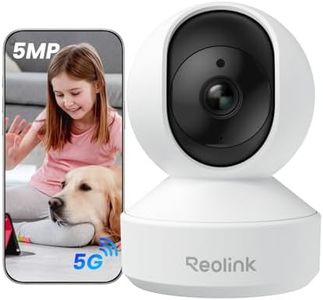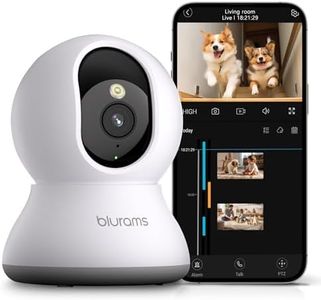We Use CookiesWe use cookies to enhance the security, performance,
functionality and for analytical and promotional activities. By continuing to browse this site you
are agreeing to our privacy policy
10 Best Indoor Cameras
From leading brands and best sellers available on the web.Buying Guide for the Best Indoor Cameras
When it comes to picking an indoor camera, it's important to think about what you want to keep an eye on, where you'll place the camera, and how you plan to use the footage. Indoor cameras come in a variety of shapes and offer many different features, so taking the time to understand your needs will make it much easier to find a camera that matches your situation. Think about things like how much area you need to cover, how you'll access the footage, and what kind of notifications or features would be helpful for your home. A careful approach will help you choose a camera that's effective, easy to use, and fits your lifestyle.ResolutionResolution refers to how clear and detailed the video from your camera will be. It's measured in pixels, like 720p (HD), 1080p (Full HD), or 4K. Higher resolution means you can see more detail, which is useful if you need to identify faces or small objects in your footage. Lower-resolution cameras (like 720p) can work for monitoring general activity in small rooms, while 1080p is generally a great balance for most indoor uses, providing clear images without using too much internet bandwidth or storage. If you want ultra-sharp video for large areas or critical detail, consider higher resolutions like 2K or 4K, but make sure your network can handle the extra data. Think about what level of detail you'll need; if you just want to check if someone is home, lower resolution may suffice, but for better security or evidence, aim higher.
Field of ViewField of view describes how wide an area the camera can capture at once, usually measured in degrees. A narrower field of view (under 90 degrees) focuses on a specific spot, which is good for monitoring doors or small spaces. Wider fields of view (between 110 and 130 degrees) are suitable for covering whole rooms. Very wide fields of view (over 130 degrees) can see even more, but sometimes corners may look a bit stretched. Think about the space you want to monitor: for single entryways use a narrow view, for living rooms or large spaces go for a wider angle.
Night VisionNight vision allows your camera to see in the dark using infrared lights or other technologies. This is critical if you want security at night or in low-light areas. Some cameras have basic night vision that works up to a few meters, ideal for small rooms like bedrooms. Others offer stronger night vision, letting you see clearly in larger or darker spaces. Consider how much light your indoor area usually has at night and whether you want to capture clear images even in total darkness.
Audio CapabilitiesAudio can either be one-way (you can hear what's happening) or two-way (you can hear and speak through the camera). One-way audio is useful for simple monitoring, while two-way audio lets you talk to family members, kids, or even pets while you’re away. Choose one-way if you simply want listening capability, but if communication is important—like reassuring a child or warning an intruder—look for two-way audio.
Motion DetectionMotion detection means the camera will notice movement and can alert you or start recording. Basic motion detection simply triggers on any movement, while smarter cameras can distinguish between people, pets, or other movements. If you want to avoid constant notifications from pets or background movements, look for cameras with customizable motion zones or human detection. For general use, regular motion sensing is fine; for busy homes or high-traffic areas, advanced detection may be helpful.
ConnectivityIndoor cameras connect to your home network either by Wi-Fi or sometimes Ethernet (wired). Wi-Fi is simpler and flexible for placement, but needs a strong, stable signal. Wired connections can be more reliable but limit where the camera can go. If your camera will be far from your router or in an area with weak signal, consider how you'll ensure a reliable connection. Think about your home's layout and choose the kind that fits your setup best.
Storage OptionsStorage means where your video footage is saved: on a microSD card inside the camera (local storage), in the cloud (online storage), or sometimes both. Local storage avoids any monthly fees and gives you direct access, but if the camera is damaged or stolen, the footage may be lost. Cloud storage lets you access video from anywhere and keeps footage safe offsite, but may require subscriptions or ongoing fees. Consider how important it is to view footage remotely and how much video you want to keep when deciding on storage.
Smart Home IntegrationSmart home integration means your camera can work with other devices, like smart speakers or security systems, using platforms such as Google Assistant, Amazon Alexa, or Apple HomeKit. If you have other smart home devices or want to build a connected system, look for cameras that work with your preferred ecosystem. If you’re just looking for basic monitoring without integration, this may be less important.
Privacy FeaturesPrivacy features help you control when and how your camera records. Some cameras have physical shutters, scheduling, or ways to disable recording when you’re home. This is useful if you have concerns about being watched or want your camera to only record at certain times. Consider how much privacy you want in your space and if you want easy ways to turn off recording when needed.
